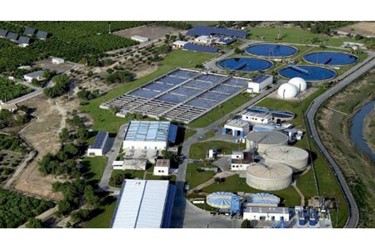Brand New Methodology Recovers A Large Part Of The Available Phosphorus From WWTP

Researchers have developed a methodology that allows to recover around 30-40% of the phosphorus from the Wastewater Treatment Plant (WWTP), thanks to a new configuration of the sludge line that allows to extract and separate phosphorus prior to anaerobic digestion.
The methodology was developed at IIAMA-UPV (Institute of Water and Environmental Engineering of the Universitat Politècnica de València).
This methodology is the result of the work that is being developed in the European project LIFE ENRICH (Enhanced Nitrogen and Phosphorus Recovery from Wastewater and Integration in the Value Chain), and that seeks to contribute to the circular economy through the recovery of nutrients from the WWTP and its Subsequent recovery in agriculture.
The research - which is being developed in the WWTP of Murcia-Este - has its starting point in that in the agricultural sector, phosphorus and nitrogen are the main nutrients used as fertilizers. However, nitrogen production has a negative impact on the environment due to its high energy consumption, while phosphorus is considered a non-renewable natural resource, which could be scarce in the future if current exploitation levels are maintained.
IIAMA work area
The work carried out by the members of the Water and Environment Engineering Institute (IIAMA) is based on the proposed modification of the sludge line of the Murcia-Este WWTP, supervision of the works and decision-making during the operation of the new configuration of the sludge line , as explained by the deputy director of the IIAMA and principal investigator by the UPV, Ramón Barat.
"During the biological process of wastewater treatment, bacteria develop, known as PAO bacteria , which eliminate large amounts of phosphorus by accumulating it intracellularly. Subsequently, during the process of stabilization of the sludge, produced mainly by anaerobic means, the phosphorus contained in the PAO bacteria is released into the environment, triggering important precipitation problems in the digesters, pipes, pumps and dehydration equipment of the sludge. consequently, increase in the costs of sludge management, "says Dr. Barat.
With the new method developed by the researchers of the CALAGUA group, it will be possible to recover around 30-40 of the phosphorus coming from the mud line , since a stream with a high percentage of soluble phosphorus will be generated that will be precipitated in a reactor
"With the traditional method of recovery of phosphorus after anaerobic digestion, less than 15% was recovered, as opposed to this new technique that allows having around 30-40% of the phosphorus present in the wastewater", highlights Professor Barat.
To develop this methodology, the CALAGUA researchers have studied the process at the simulation level, have calibrated the BNMR1 mathematical model in the Murcia-East EDAR and have analyzed different alternatives in sludge management. In fact, o nce this work has been carried out, the most optimal alternative that will be implemented on a real scale in the WWTP of Murcia-Este has been selected, in which the IIAMA members will monitor and supervise the process.
Partners of the LIFE ENRICH Project
The LIFE ENRICH project - started in September 2017 and lasting three and a half years, is coordinated by Irene Mozo, Project Manager of Cetaqua, and the Agri-Food Research and Technology Institute (IRTA), responsible for the agronomic tests; Aquatec-SUEZ Advanced Solutions , responsible for the definition of the business model; the community of irrigators Aigües del Segarra Garrigues (ASG) , as the final user of the products; the Municipal Water and Sanitation Company of Murcia (EMUASA) , responsible for the operation of the pilot, the Universitat Politècnica de Catalunya (UPC) as experts in the recovery of nitrogen and Universitat Politècnica de València (UPV) , as experts in phosphorus recovery.
Specifically, the IIAMA work team is composed of Ramón Barat as principal investigator, the head of the Water Quality group (CALAGUA) José Ferrer, Joaquín Serralta, Daniel Aguado, María Pachés and Miguel Roldán.
Source: IIAMA-UPV
